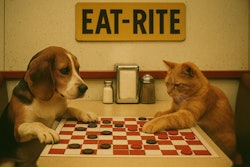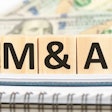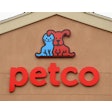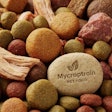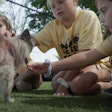
When KLN Family Brands acquired Finley's in May 2022, the deal prioritized mission preservation over traditional merger-and-acquisition strategies. Charlie Nelson, CEO of KLN Family Brands, and Kyle Gallus, co-founder of Finley's and vice president of brand development for Tuffy's Pet Food & Treats, shared insights on their partnership-focused approach during the latest Trending: Pet Food podcast with host Lindsay Beaton, editor of Petfood Industry.
During the episode, the trio discussed how mergers and acquisitions can happen without losing brand mission and purpose. The conversation explored KLN's unique acquisition philosophy, which prioritized Finley's mission to create jobs for people with disabilities over immediate financial benefit.
Below are 10 takeaways from EPISODE 96: How can acquisitions preserve a company's brand mission and purpose?
1. Mission-first conversations set the foundation
The acquisition discussions began with an unusual question: How could the deal maintain Finley's brand integrity while accelerating its mission? Nelson reached out to Gallus and his wife Angie initially with congratulations rather than a purchase offer, establishing trust before formal negotiations began.
"The very first question that led this whole conversation was, how do we do this in a way that not only maintains that brand purpose, but accelerates it?" Gallus said. "That is rare."
2. Purpose can drive profit when scaled correctly
Gallus emphasized that KLN approached the acquisition differently than other potential buyers by recognizing that purpose could drive profitability rather than the reverse.
"There's profit that must drive purpose. Sometimes we think that is rooted in the right thing, but it's a little bit flipped with the Finley story—that purpose can drive more profit if we scale this correctly," Gallus explained.
3. Founder involvement was non-negotiable
Unlike typical acquisitions where previous ownership gradually exits, KLN made founder involvement a requirement. Nelson stated the deal would not have proceeded without Kyle and Angie Gallus remaining as active drivers of the business.
"We would not have done this if it did not include Kyle and Angie being absolutely the drivers of this going forward," Nelson said. "Our biggest goal was making sure they get to do what they do best, and that is, tell their story, tell their passion, embrace that community and figure out how we create more and more jobs."
4. The results speak to the partnership's success
Since the acquisition, Finley's growth demonstrates the effectiveness of this approach. From 35 individuals with disabilities across five states at the time of acquisition, the company now serves over 160 ambassadors with disabilities across 19 states.
"That would not have happened without that initial approach, that initial question, just kicking off the conversation," Gallus said.
5. Trust trumped transaction terms
When evaluating the acquisition, Gallus and his wife removed financial considerations to focus on what truly mattered: finding the right platform for their mission to thrive.
"We removed the dollars from the equation and had a very, very long conversation — Angie and I — about how we didn't start this to make a ton of money. We started this to give people that needed a chance to have a platform to do what they love," Gallus said.
6. Family ownership enables flexible timelines
Nelson highlighted a key advantage of family-owned businesses: freedom from external pressures and timelines that often drive acquisition decisions in private equity or venture capital environments.
"We aren't attached to anybody else's timeframe. We can do what we want. We can grow in a manner which we're most comfortable with," Nelson said. "I don't ever go to bed or wake up thinking about a deadline when something needs to exactly happen when it comes to the acquisition world."
7. Specialization maximizes strengths
Both leaders emphasized letting team members focus on their core competencies. KLN brought manufacturing expertise and operational infrastructure, while Kyle and Angie Gallus continued driving brand storytelling and community engagement.
"I think we're very good at manufacturing pet food and treats. I'm proud of that," Nelson said. "But we needed Kyle and Angie to be allowed to do what they did best, and that's what they're doing every day right now."
8. Small teams enable rapid response
Gallus noted that family-owned business structures allow faster decision-making compared to larger corporate hierarchies. The ability to hear feedback from customers, retailers and team members and act on it quickly maintains strong relationships.
"What's really cool and what's really different in this family-owned business is just our ability as a small team to hear that feedback, good, bad and different," said Gallus. "We get to hear it, and we get to act on it."
9. Remove money to find clarity
For founders considering acquisition offers, Gallus recommended an unconventional exercise: remove financial considerations entirely and identify what the business truly needs.
"Remove dollars from the equation, and what do you truly need?" Gallus asked. "What's going to get you up in the morning excited to go to work after your brand or your baby has been purchased? You'd be surprised at how many of them just say that operational piece, or just that brand building or just more mentorship, and you don't need a lot of capital to solve that."
10. Align on mission before closing deals
Nelson emphasized that buyers must embrace a company's mission and initiatives before finalizing any acquisition, especially if founders plan to remain involved.
"If you aren't sure, the purchaser embraces those things, you need to be prepared to be on the outside looking in," Nelson said. "People must buy your company and buy your mission before they buy your product, and that's why I think this was important."
The KLN-Finley's acquisition demonstrates how merger-and-acquisition strategies can prioritize mission preservation while achieving business growth, offering a blueprint for purpose-driven partnerships in the pet food industry.
Listen to the full Trending: Petfood Podcast here.
Learn more ... KLN Family Brands: 60+ years in, still growing with purpose
This multi-brand company aims to meet pet owner needs while staying true to its philanthropic mission.





